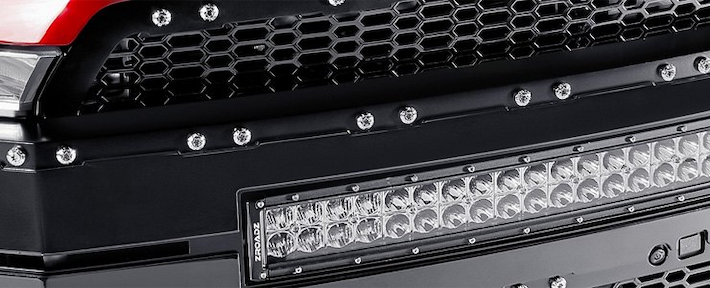Electrification may have meant that the internal combustion engine is nearing extinction, and that certain car features like grilles are taking a step in the same direction. Grilles are by far the most recognizable piece of body trim on any car, gas powered or otherwise. And they’re a brand signature by which car enthusiasts distinguish between different car makes, or even models of different production years. BMW’s (oversized) kidneys, for instance, are easily distinguishable from the Pantheon grille in any Rolls, or the vertical bars in Jeep cars.
Besides aesthetics, a car grille also serves a practical function, letting atmospheric air cool down hot engine parts and redirect air to increase aerodynamic performance. That this is unnecessary in EVs also means radical changes in car designs, specifically at the front. Car manufacturers, however, aren’t letting go of their hallmark designs traits that single them out from the crowd, and fake grilles (and exhaust tips) can be seen on many fully electric cars, for now anyway.
Grille Basics
The grille is a piece of plastic or metal body trim located between the headlights, and situated directly in front of the radiator. The component can take different shapes and sizes, and as mentioned, is a design characteristic differentiating car brands and models form one another. The component also serves several vital functions in internal combustion engines. And can be paired with “lower” grilles or openings for higher efficiency.
Purposes

Designs may have changed or morphed into entirely different grilles throughout the years, but the main purpose of the car grille still remains the same:
- Providing cooled air into the engine bay – engines can get hot, especially now that downsizing and turbocharging are the main ways to restrict fuel use without cutting power. The steady flow of air helps cool the coolant reaching the radiator and prevents power loss from overheating. The width, height and number or openings in a grille can additionally affect related car systems, such as providing cooled air to overheating brake components, thereby increasing braking efficiency and overall safety.
- Protection – roads are littered with all sort of debris, and car grilles with front and rear facias do a remarkable job at filtering air from all the junk your car encounters. Even minor stones or particles hitting your car at highway speeds can do major damage, and the grille is the barrier that prevents this from happening.
- Aerodynamics – drag coefficients, or how oncoming air tries to slow down vehicles, have been drastically reduced with slanted designs that redirect air over, under and to the side of the car. This aids overall aerodynamics when carefully proportioned and designed grilles are paired with other aero parts such as bumpers, air scoops and splitters. With less air directly hitting a larger area, cars accelerate faster, reach higher top speeds, and use less fuel in the process.
Common Grille Designs
Factory car grilles often come in two basic designs – mesh and billet. Mesh designs feature on both everyday and luxury cars ( from Kias to Bentleys), are usually in a single piece of metal or engineering plastics, and include several interwoven layers for increased engine protection. And they can differ in thickness, with fine mesh giving an understated luxurious look, while thicker mesh designs with fewer openings going for ruggedness.
Billet-style types consist of a defined number of vertically or horizontally stacked bars, resembling steel ingots or billet bars. The Rolls Royce Phantom and Ford F-150 are just two takes of the billet style. These too can be of varying materials.
If you’re after something more personalized, then custom grilles in the right dimensions also fit the bill. There are dozens of aftermarket grille manufacturers that also do custom fits, without compromising the main purpose of supplying the engine with cool air. This is just one consideration when modifying your car or doing engine rebuilds.
Choosing the Right Grille
Factory parts can soon show their age, sustain damage in regular driving or accidents, or rust and crack from long exposure in heavy rain or direct sunlight. You may also want to change the look of the car with a custom design. Whatever the reason, there are a few factors to consider when buying the right grille for your car:
- Materials – there’s a huge choice to grille materials, from aluminum or stainless steel, to plastics or carbon fiber. Metals are common in both mesh and billet types, and offered with a range of coatings to suit individual tastes and increase protection. Chromed steel is especially popular in muscle cars, while hardened plastics are often reserved for cheaper vehicles. Carbon fiber is widespread in performance cars, where it’s favored for outright strength, very low weight and resistance to corrosion.
- Size and fit – while manufacturers do take the guesswork out of which grille works and which one doesn’t, carefully measure widths and heights and ensure that aftermarket or OE replacements have molding, inserts and mounting hardware supplied. Fitting a new grille take a few minutes and done with basic tools.
- Style and designs – choose what suits you in terms of personal taste. There are dozens of customization options, including LED inserts, personalized or brand logos and more.
- Prices and brands – prices depend on multiple factors, from vehicle type and model, the size of the grille, the materials and production methods, and the brand that does the manufacturing. Choose from established car parts brands and shop from reputed stores to ensure you get a quality product that’s easy to install, and meets your performance and aesthetic expectations.



